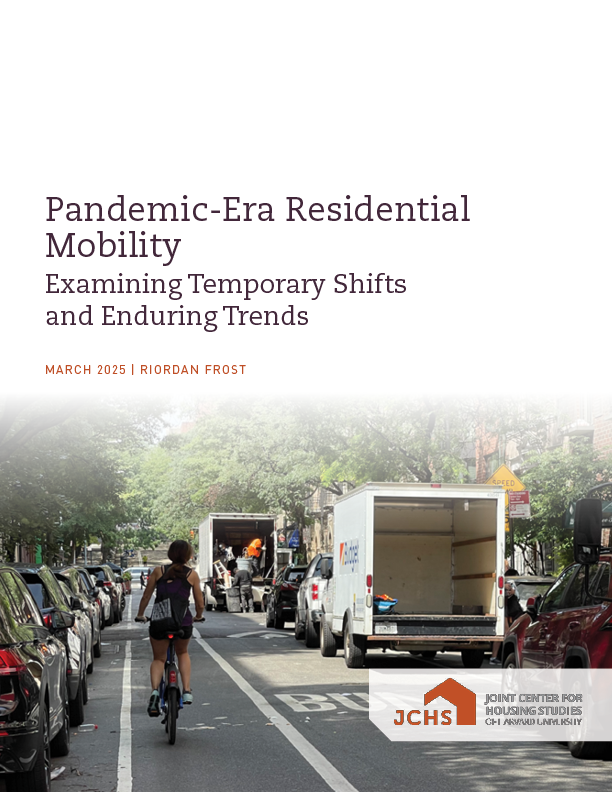Pandemic-Era Residential Mobility: Examining Temporary Shifts and Enduring Trends
There were temporary shifts in residential mobility during the pandemic, including an increase in moves in early 2020, heightened homeowner moves through 2021, and an increase in interstate migration through 2022, driven in part by remote workers. Other trends endured beyond the pandemic. Affordability barriers contributed to a further decrease in local mobility rates, which drove an overall decline in residential mobility both during and after the pandemic. Lower-density suburbs, smaller metro areas, and non-metro areas received heightened inflows both during and after the pandemic, buoying migration to low-density states. Conversely, large urban areas and many high-cost states had accelerated outflows during the pandemic, though these slowed after the pandemic. Sunbelt states continued to draw the most migrants overall during and after the pandemic, but post-pandemic flows point to an emerging shift in this regional paradigm. This paper analyzes several datasets to examine the differences and similarities in mobility trends before, during, and after the pandemic, revealing that some aspects of mobility meaningfully changed.

